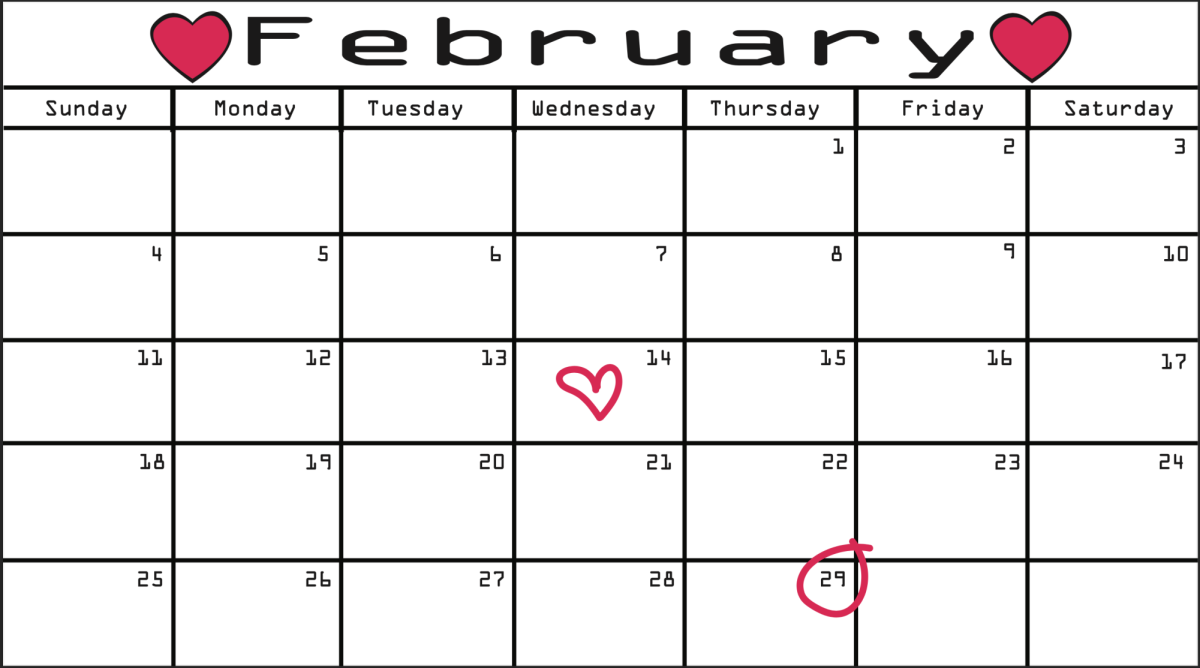The Earth takes about 365.24 days to complete one orbit around the Sun. If the Earth was strictly on a 365-day calendar we would lose almost six hours yearly. It doesn’t sound like much at first, but over time, this adds up, and the seasons start shifting weirdly. Imagine celebrating the Fourth of July in snow boots, or Halloween at the beach.
To keep everything aligned, an extra day was added every four years, making it a 366-day year. This extra day is February 29, Leap Day. It’s like a time adjustment to keep the yearly calendar in harmony with Earth’s actual orbit and the astronomical year.
Leap Day is thought to be on Feb. 29 because it is the shortest month of the year, but it has a deeper reasoning. The Roman calendar was structured in a way that February was the last month of the year. The Romans believed that even numbers were unlucky, so they did not want to end the year on an even number. Adding the extra day made leap years especially lucky for the Romans.
Leap years are typically every four years, but certain years cannot be leap years. If a year is divisible by 100, it’s not a leap year unless it’s also divisible by 400. That’s why 2000 was a leap year, but 1900 wasn’t. This ensures each year is lined up with the astronomical calendar
Leap years keep our calendars and holidays on track with the seasons. Without them each year would look very different.



















